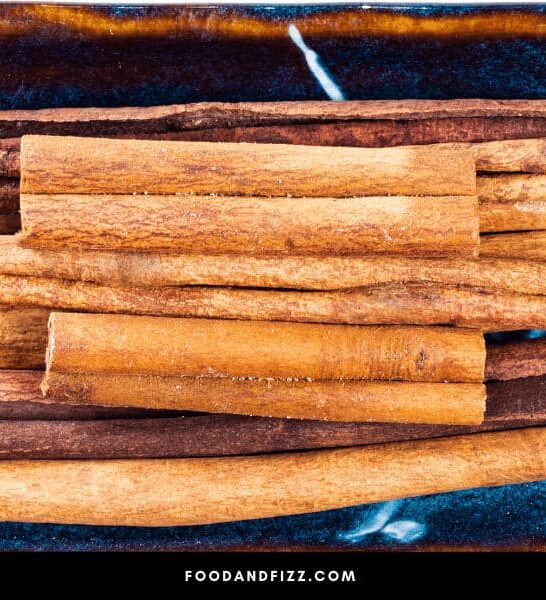Why Does Cinnamon Taste Sweet? Cinnamon is one of the go-to spices I add to both savory and sweet dishes.
I was curious one day about the taste of cinnamon when it isn’t added to food, so I dipped my finger into the ground spice.
My cinnamon had a sweetish taste, but it was spicier and there was a bitter aftertaste. I wasn’t impressed.
I shared what I learned with my aunt whom I think of as a master baker, and she explained that there are different types of cinnamon.
She had me tasting the 4 varieties she had in her pantry, and I discovered one type of cinnamon that’s sweeter than the rest, with no strange aftertaste.
But why is cinnamon naturally sweet, and why are some cinnamon types sweeter than others?
Why Does Cinnamon Taste Sweet?
Cinnamon tastes sweet because of the essential oil cinnamaldehyde that’s found in the spice, whether it is in bark form or ground powder. There are 4 types of cinnamon, and each has a different flavor profile because the amount of cinnamaldehyde varies in each cinnamon type.
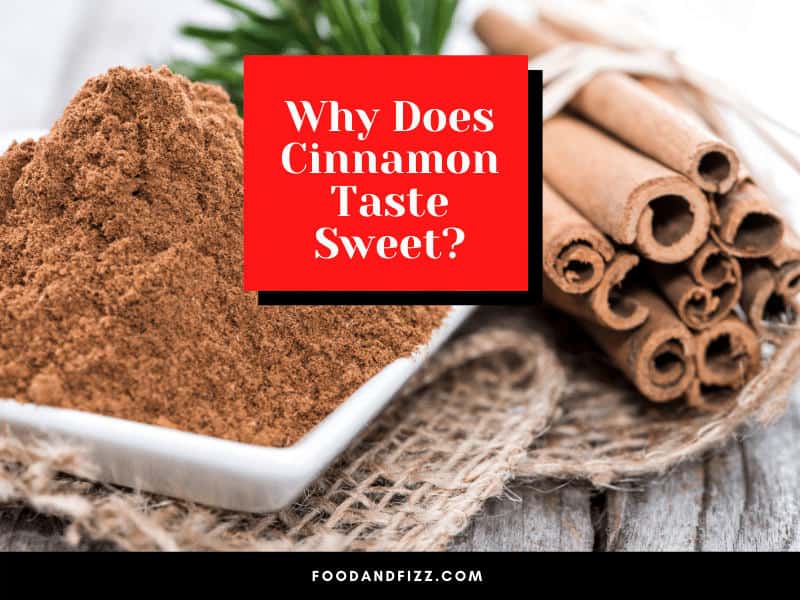
The Sweetness of 4 Different Cinnamon Types
Saigon or Vietnamese cinnamon has the highest cinnamaldehyde content, so it has a rich and sharp spicy-sweet flavor.
Cassia or Chinese cinnamon has 95% cinnamaldehyde with a spicy-sweet taste, and Indonesian cinnamon (or korintje) has a woody or earthy sweet taste that has a subtle spiciness to it because the cinnamon contains less cinnamaldehyde.
Lastly, Ceylon cinnamon has the least cinnamaldehyde of these 4 cinnamon types, and it has a mild sweet taste with floral and citrus notes.
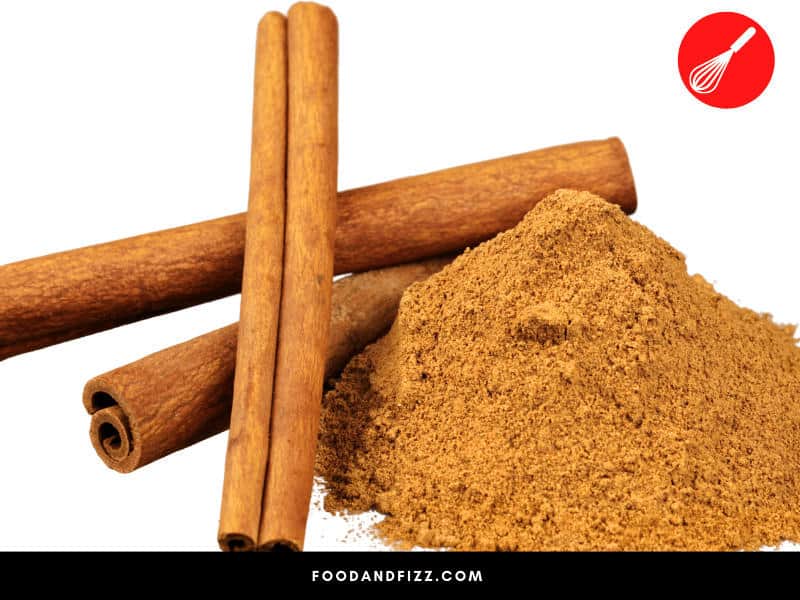
Exploring the Sweetness of Cinnamon
Cinnamon is a spice with a history that goes back to 2,000 BC. The spice is harvested from the inner bark of various evergreen trees in the Cinnamomum genus and Lauraceae plant family.
The inner bark, once stripped from the outer bark, is laid in the sun and then it curls into quills (cinnamon sticks).
In general, the source of cinnamon’s sweetness is attributed to cinnamaldehyde (or trans-cinnamaldehyde), an essential oil found in the spice. Cinnamaldehyde is also found in chocolate, citrus, and (of all things) tomatoes.
Cinnamaldehyde is mostly a trans (E) stereoisomer, with various roles, but one of which is a flavoring agent. Thus, the essential oil is also primarily responsible for how cinnamon smells. When extracted, it’s a clear yellow oil.
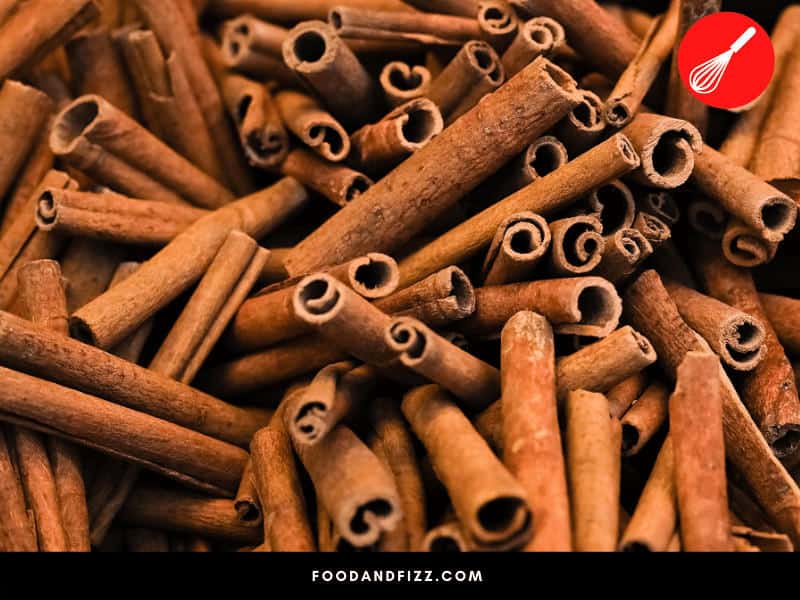
Types of Cinnamon
How sweet cinnamon is depends on the type of cinnamon, when it is harvested, and how much cinnamaldehyde is in the bark.
1. Cassia Cinnamon
Cassia cinnamon (Cinnamomum cassia or Cinnamomum aromaticum) is also called Chinese cinnamon because that’s the country of origin, and it’s harvested from the Cinnamomum trees that grow in China. This type of cinnamon is the most common type found in North America, and containers with the ground spice or bark are simply labeled “cinnamon.”
Cassia cinnamon’s bark is dark reddish-brown and has a double spiral in the thick quill. This cinnamon has a spicy-sweet flavor and a bitter aftertaste. This is the cinnamon I first tasted.
The reason cassia has a burning-spicy flavor is because of the high cinnamaldehyde content. About 95% of the essential oil found in cassia cinnamon is cinnamaldehyde.
Use small amounts of cassia in your dish and taste before adding more to avoid your dish having a bitter flavor.
Cassia cinnamon is the perfect addition for:
- Muffins
- Bread pudding
- Granola
- Ice cream
- Chocolate
- Stewed fruit
- Scones
- Fall and winter pies
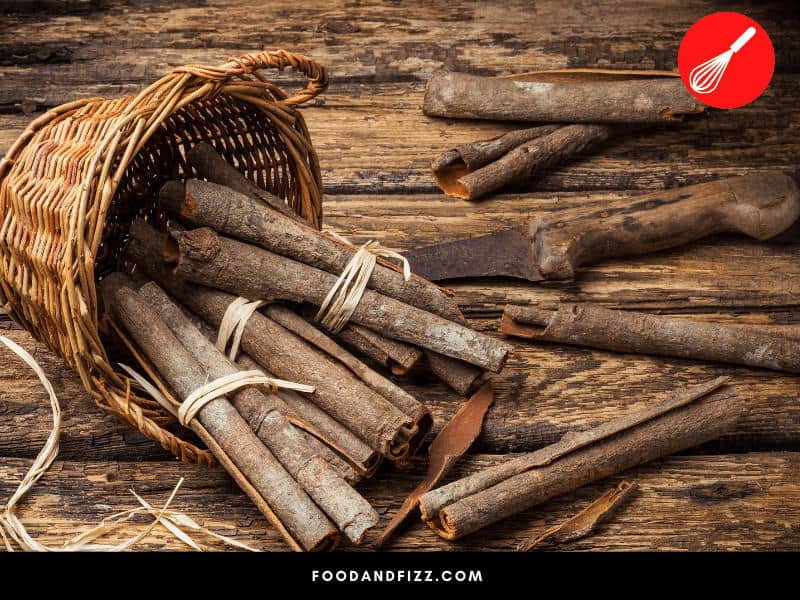
2. Ceylon Cinnamon
Ceylon cinnamon (Cinnamomum verum or Cinnamomum zeylanicum) is harvested from the Cinnamomum trees that are found in Madagascar and Sri Lanka. It’s considered to be true or real cinnamon, but the reason isn’t clear since all cinnamon comes from the same genus and family. If you want to buy this type of cinnamon, you’ll need to visit a spice shop or order online.
Ceylon bark is light brown and more delicate, with several thin layers spiraling in the quill. Ceylon cinnamon is one of the types my aunt had me taste, and I was pleasantly surprised by the mild or subtle fruity, floral sweet taste.
The lack of spiciness in Ceylon cinnamon is because there’s less cinnamaldehyde; only 50-63% of the essential oil is found in this kind of cinnamon.
Ceylon cinnamon is popular in Europe and Mexico, and you can add it to:
- Bread
- Champurrado
- Cinnamon rolls
- Pastry
- Arroz con leche
- Carnitas
- Hot chocolate

3. Saigon Cinnamon
Saigon cinnamon (Cinnamomum loureiroi) is also called Vietnamese cinnamon because it’s harvested from Cinnamomum trees that grow in Vietnam. You can buy Saignon in some grocery stores, but it may be more readily available in spice shops or online.
This cinnamon type is closely related to cassia cinnamon, but Saigon cinnamon has the highest levels of cinnamaldehyde, which is why it has a rich, sharp, sweet, and spicy flavor.
The thick bark of Saigon cinnamon is is a deep or dark red-brown
Use Saigon cinnamon in:
- Coffee cakes
- Pho broth
- Vietnamese soups
- Cinnamon rolls
- Baked oatmeal
- Pumpkin pie spice mix
- Cinnamon donuts
- Snicker doodles
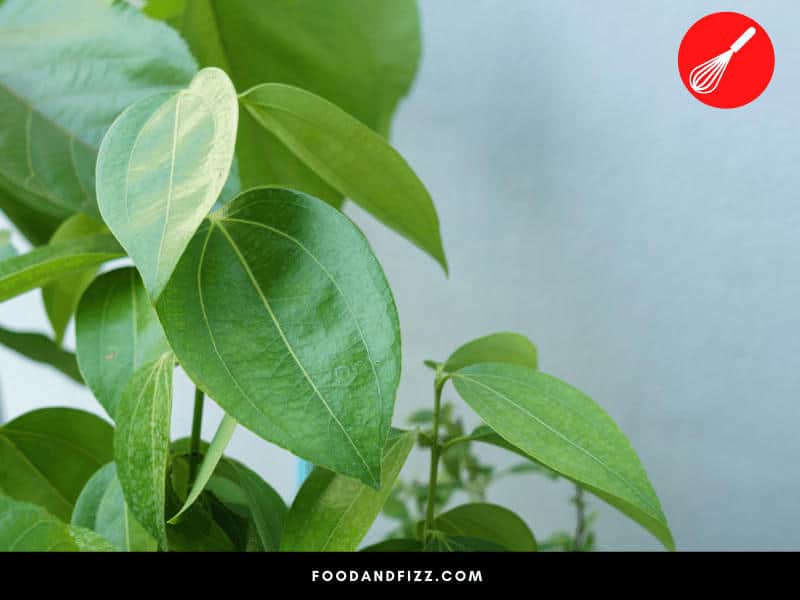
4. Korintje
Korintje or Indonesian cinnamon (Cinnamomum burmannii or Cinnamomum vera) is harvested from the Cinnamomum tree that grows in Indonesia. You can buy korintje in spice shops or from online retailers.
This type of cinnamon is the mildest when you only consider the taste of cassia and Saigon cinnamon, meaning it has more cinnamaldehyde than Ceylon and less cinnamaldehyde than cassia. Saigon cinnamon has a smooth, woody or earthy sweet taste that’s subtly spicy, with hints of pepper and clove.
The thick bark is a light reddish-brown.
Use Korintje in:
- Holiday cocktails
- Baked goods for the holidays like yuletide bread
- Pickled foods like chutney
- Quick bread
- Cookies
- Cinnamon rolls
- Indonesian curries
- Beef rendang
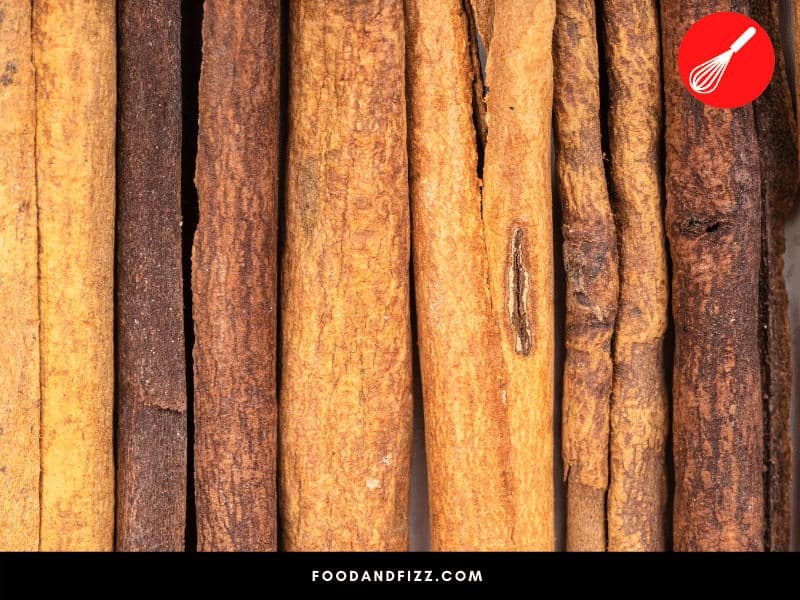
Frequently Asked Questions About Why Does Cinnamon Taste Sweet
Is cinnamon considered to be sweet?
the cinnamon is depends on the type of cinnamon. Cassia cinnamon is spicy-sweet, while Ceylon cinnamon is sweet with floral notes. Cinnamaldehyde, found in cinnamon, is the compound responsible for the sweetness. More cinnamaldehyde is found in cassia cinnamon, which explains the spicy-sweet flavor.
Is cinnamon tea naturally sweet?
Since cinnamon is sweet, cinnamon tea is also naturally sweet. When you’ve had your cup of cinnamon tea, you’ll discover there’s a sweet aftertaste. You may find that you don’t want to add sugar or sweetener to the cinnamon tea, or add less sugar or sweetener than you normally do.
What does real cinnamon taste like?
Ceylon cinnamon, considered to be real cinnamon, is mild and delicately sweet. When you smell Ceylon cinnamon, you’ll identify a sweet, floral aroma. While cassia cinnamon has a spicy-sweet flavor, real cinnamon is just sweet.
Final Thoughts On Why Does Cinnamon Taste Sweet
I have an even more profound appreciation for cinnamon now that I know of the 4 types, how they each differ in terms of sweetness and spiciness, and how cinnamaldehyde is credited for the flavor and aroma of cinnamon.
I’ve also learned which kind of cinnamon to use in what kind of recipes, and that Ceylon or Saigon cinnamon is best for sweet dishes, and cassia is perfect for savory dishes. I only use korintje for my holiday cocktails and Indonesian curries.

